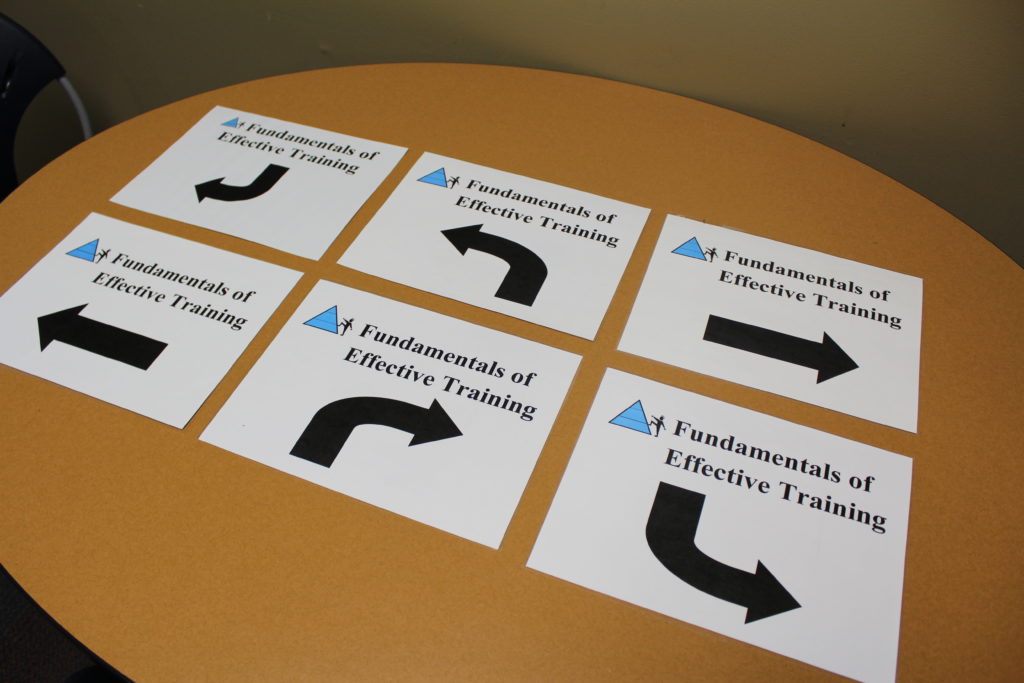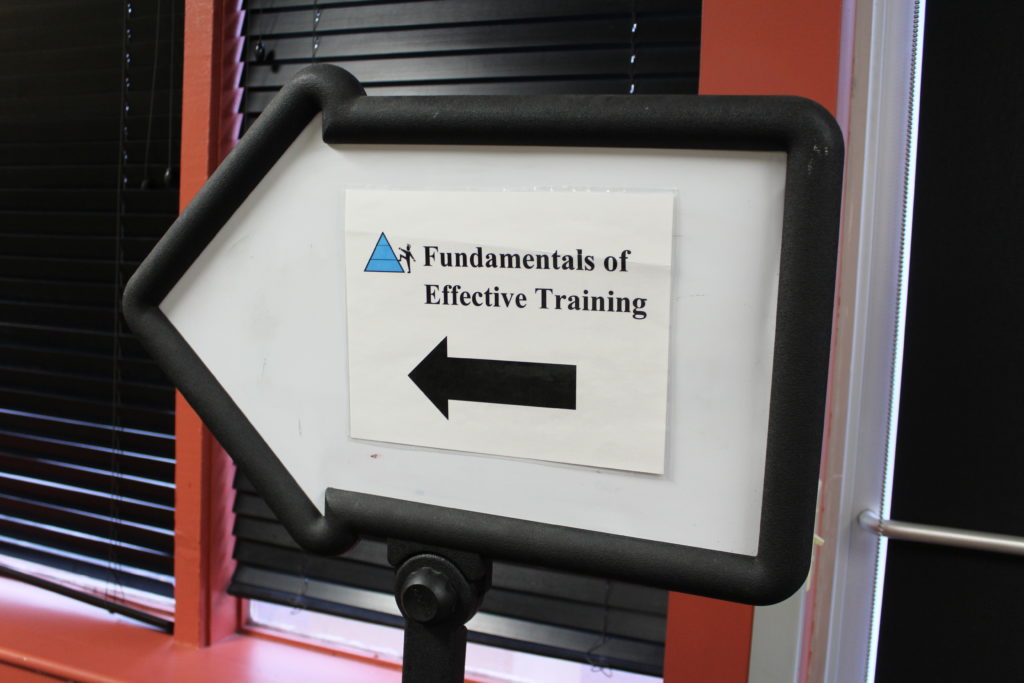Training Space Essentials
Next let’s think about ways to organize the rest of the training space to make it efficient and comfortable for your participants.


Directional signs are a nice addition that guide the participant easily to the training room and help things get off to a good start from the beginning. Think about the frustration of our participant in the disorganized trainer video who could not find the training room. She could have been saved much frustration had our disorganized trainer had these signs. Keep an assortment of signs in a portable file box so that regardless of the location of any training room in any building, the signs will work.

A sign-in table should be placed in the hall outside the training room or just inside the entrance to the room. This is less distracting to others if there are late-comers who need to sign in.

On the tables, have table numbers that are visible to both the trainer and participants. This allows the trainer to call on a table without singling out participants who might not be comfortable with that. Place a small box of supplies on each table containing items such as index cards, stapler, tape, paper clips, etc. This way participants have things they might need without interrupting the training to request supplies. Also provide fidgets on the table for those participants who need manipulative items to help them stay focused. These things go back into each container at the end of the session, so they will be ready for the next training. Pre-counted handouts on each table also make a session run smoothly. Hard candy, mints or chocolate are appreciated by participants as special little treats if you find them affordable.

Having an area that is called the “Parking Lot”, situated toward the back of the room, allows participants to ask questions by posting sticky notes. (Handy in their table-top supply box.) In this way, a participant is free to ask a question that may be a little off subject without derailing the training. It is also good for those participants who may not be comfortable asking questions in the group. The trainer needs to be sure and check periodically to see if there are any posts.

A display of resource books is handy for participants to browse through during a break. (These are samples of the types of books available to you through your training coach.)

As a courtesy to participants, offer a self-service comfort station. It is clearly marked with a sign and conveniently located off to the side, to not be distracting to others when participants go there. Point out the station and items that are found there during the housekeeping portion of the session. The throws are the most often used items, can be found for a couple of dollars each and are very much appreciated. (Be sure to launder them after each use.) In addition, have a First Aid kit, tissues, hand sanitizer, lotion, Band-aids and cough drops. Also keep sugar-free cough drops and candy in the comfort station and ask participants to be respectful and leave the sugar-free items for those whose situations require it. With increasing use of cell phones as a training aid, having a phone charger available may be beneficial.
FET TIP: At an FET face to face the training site had computerized heat settings with no access to control. The system was not scheduled to have heat on Saturdays. Participants who were not prepared with warmer clothing found the throws to be what saved the day.

If offered, it is best to have refreshments (if budget permits) set in the back of the room. Participants should be welcome to help themselves to a snack or refill of coffee at any time. However, this should not be a constant disruption to the group overall. When the table is in the back of the room, it is far less distracting.

And by now, you are probably wondering how to get all this wonderful “stuff” hauled into the training room. A cart is an investment that will save you time and a back ache! This is also a good time to mention that when checking out a training site, pay attention to how far the distance will be from where you will unload materials out of your vehicle before you reach the training room. (Be mindful that some buildings may have many steps before you ever enter the outside doors, rendering a cart useless.)
